2020
recent Cases
Discover more recent cases!
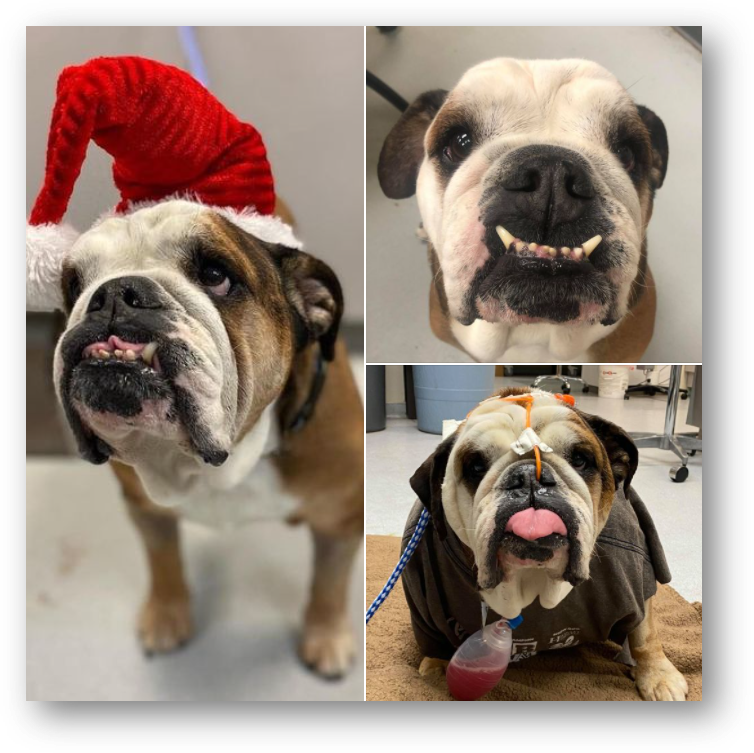
Kaylani came to us in a lot of pain. She had found her way into what we believe was the garbage bin. She ate string, ribbon, plastic, and a watchband, and unfortunately, the objects became stuck in her stomach and small intestine. We performed a gastronomy and enteronomy (stomach and small intestine surgery) in our Shelter Medical Center to remove the objects but discovered the plastic has sharp edges and had punctured holes in her soft tissue which complicated her recovery, and resulted in a second surgery just 4 days later.
We’re happy to report that this happy girl has a new chapter in life and is ready to find her forever home! Read more…

Tanner has a new lease on life and is celebrating Christmas at home with his family! This sweet boy gave us all a good reminder (especially around the holidays!) that we aren’t the only ones who struggle with our sweet tooth cravings; dogs will eat candy, and sometimes the wrapper if it’s in their reach.
Tanner’s owners noticed he wasn’t interested in eating one day, and late the next morning, they discovered that he had vomited. They brought Tanner to West Vet where he was diagnosed with a foreign body obstruction. Looking for a more affordable option, they were referred to our Veterinary Medical Center where he received emergency surgery. Our veterinarians performed an enteronomy to discover what was blocked inside his intestines. They removed multiple gummy wrapper bags, and we’re happy to report that he is now on the mend and back at home! Read more…
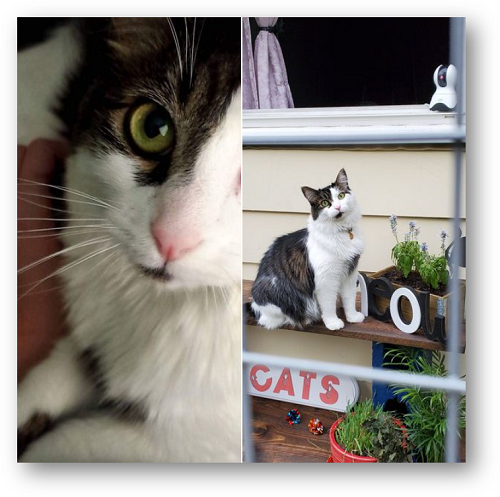
Charming is a 6-year-old feline who was a happy, loving cat; unfortunately, he experienced some unknown stress that caused him to have health issues. His family quickly realized he was having a difficult time urinating. He would squat to pee in odd places, on pillows, in the dirty laundry basket, on stuffed animals; however, there wasn’t much pee that would come out. With concern, his family brought him to see the doctor.
The doctor determined that he had a urinary tract infection; he was prescribed antibiotics. The infection didn’t clear up; his family brought him back in. They did another test, which determined that he had struvite crystals. Struvite is a urinary mineral composed of ammonium, phosphate, and magnesium – which will bind together and create crystals. The doctor prescribed a prescription diet to help dissolve the crystals. Read more…

Garfield arrived in October as a transfer from Eastern Idaho. The Bonneville County Shelter reached out to us to see if we could help with his fractured leg. Unfortunately, after our veterinarians performed an exam, they were unsure if the leg could be saved. We sent him to foster care for TLC and rest to see if he would recover on his own, since surgery wouldn’t help in his case.
Garfield continued to favor his right hind leg and would not put any weight on it, which lead to the decision to amputate his leg. He had a successful surgery and is now cleared to find his forever home. Watch video…
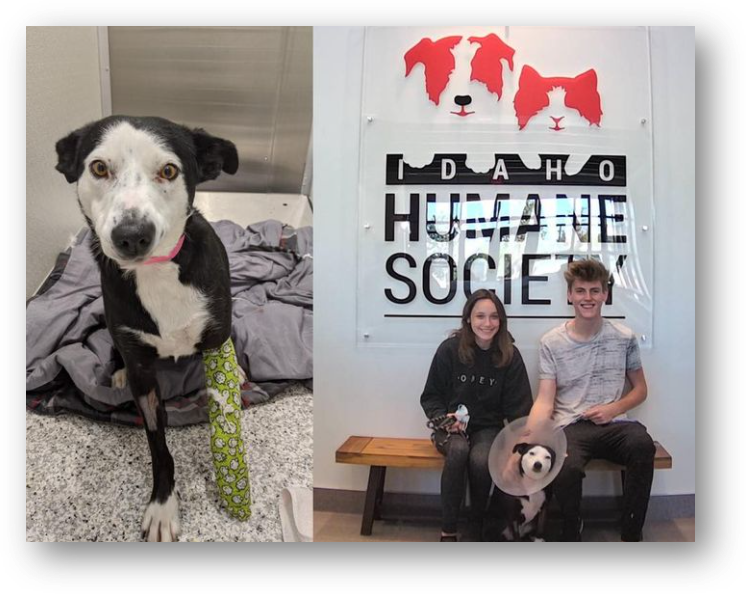
When we saw Arabella, we knew she needed immediate veterinary care; she had a metal wire protruding from her left front leg! However, she was still bright, alert, responsive, and loved to give kisses. Dr. Castillo took x-rays and performed a veterinary exam at our Shelter Medical Center. She discovered a plate, screws, and wire in Arabella’s front leg, from what appears to be a former fracture in Arabella’s left radius and ulna.
Luckily, there were no signs of infection, and with her fracture healed, Dr. Rosenthal was able to remove the plate, screws, and wire. After her surgery and a few sutures, Arabella was back on her feet and quickly found her forever home. Read more…
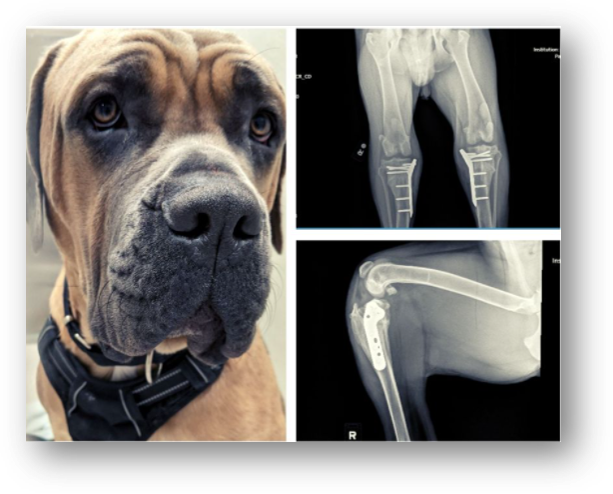
Alden originally came to our shelter as a stray. He’s a big, sweet Mastiff weighing 120 pounds at one and a half-years-old! After multiple attempts to find his owners, we started to look for his forever home. Alden was adopted out quickly; unfortunately, it didn’t last forever. His adopters discovered that he seemed to be in pain when walking upstairs and didn’t enjoy interacting with his new family’s kids and cats.
When Alden returned, we gave him another veterinary exam. From the exterior, his gait looked normal. However, Dr. Castillo thought it was worth taking some x-rays to rule out an injury. It turns out Alden had an anterior cruciate ligament (ACL) rupture, meaning he needed to have Tibial Plateau Leveling Osteotomy (TPLO) surgery. Read more…

Hershey is lucky to be alive. She was riding in the back of a pickup about 35 MPH and fell out. Not realizing she had fallen out, they kept driving until a Good Samaritan flagged down the driver. Realizing she was greatly hurt, Hershey’s owner immediately brought her into our Veterinarian Medical Center, where she was assessed and made comfortable. She sustained severe damage from being drug several miles and after receiving the veterinary estimate and given a time/pain management regime, her owner decided to surrender her to us medically.
Hershey’s four paws were mutilated with bone exposed on one of her back feet. Dr. McGrath, Director of Shelter Medicine, changed Hershey’s bandages daily until her wounds produced healthy granulation, and over time, Dr. McGrath extended the time between bandage changes because she was healing so well. Read more…

Tiberius’ leg was severely fractured, and there was severe trauma to his skull including a shattered jaw. He was barely recognizable. But he recognized her and despite his injuries tried to climb into her arms. What followed was a long series of difficult surgeries. Though the prognosis wasn’t good, the vets decided that “If he is going to keep fighting, we will keep fighting for him.”
Today Tiberius, or Tibby for short, is a happy member of the Barlow family. The injuries to his jaw left him with a tongue that’s askew, but he has regained almost all of his motor skills and feline grace. Perhaps too much so; he’s been known to literally swing from the chandeliers of their family home, happily demonstrating the zest for life that no doubt helped him survive such a grueling ordeal and fight his way back to his new forever home. Read more…

Forrest is lucky he came to IHS as a stray this month. During a routine neuter, Dr. McGrath discovered that he was born with a congenital condition called “pectus excavatum” where the sternum curves upward towards the spine instead of downwards toward the belly. Forrest’s condition is severe and unfortunately. this leaves less room for the heart and lungs to work which can cause cardiac and respiratory issues since the lungs or heart cannot fill as they should.
The window to correct this condition is relatively small and surgery must occur before they are four months old; thankfully is only 2.5 months! Read more…

Opal came to our shelter as an owner surrender. His family was moving and could not take her with them. Dr. McGrath completed a veterinarian exam after Opal arrived. Unfortunately, she found a cancerous mass on her left shoulder. Dr. McGrath was able to remove the mass without complications successfully. Opal recovered beautifully and is now living with her forever home.

It’s not uncommon to see stray cats arrive with bite wounds on their face or neck from other cats, but Percy was suffering from a gruesome infection in his sizable neck wound. This four-year-old boy was covered with maggots and in a great deal of pain. Dr. McGrath, our Director of Shelter Medicine, flushed the wound, removed the larva, and bandaged him for the first of several wound cleanings to come.
It took several weeks and procedures to clean the wound and free it of infection; however, the wound was still too large to close even with these steps. Dr. McGrath took a flap of skin from Percy’s neck/shoulder area to close the open wound for healing. Read more…
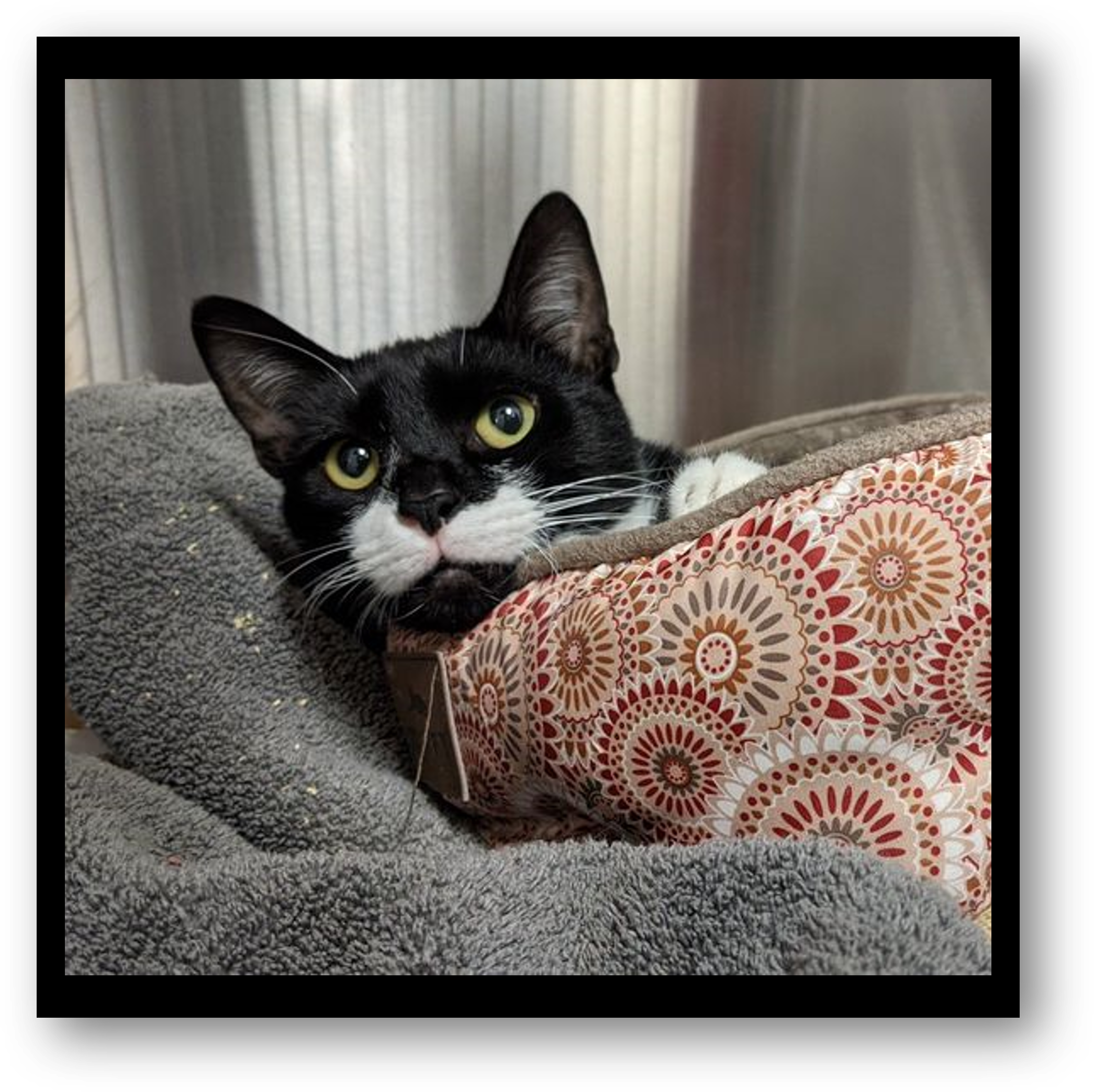
Archie came to us after a Good Samaritan called Animal Care and Control for assistance after a cat had been found injured and limping. Dr. McGrath, our Director of Shelter Medicine, diagnosed him with a Brachial plexus avulsion; a condition where the nerve had been separated from the spinal cord, typically from a high-speed impact. Our team monitored him and provided pain medication to ease his stay, hoping that he would regain the use of his arm.
Unfortunately, his owner didn’t come to redeem him, so we sent him to foster care for some TLC and careful watching to see if his arm would improve outside of the shelter. Eventually, Archie came back for another evaluation and Dr. McGrath determined the best course of action would be a leg amputation so he could live a pain-free life. Read more…

On a Monday evening in October, our Humane Officers received an urgent call. A Boise resident reported a horrifying sight – an orange and white cat in terrible distress with what appeared to be a pencil sticking out of its left eye. Our officers responded and rescued the cat and rushed him to our Shelter Medical Center.
An Idaho Humane Society veterinarian examined the injured cat and determined the object was, in fact, a crossbow arrow. Tragically, the potentially lethal projectile had penetrated through the feline’s eye, but an x-ray showed that it miraculously did not enter his brain. The arrow was removed under anesthesia, and the wounded cat was treated with antibiotics, pain medication, and IV fluids. The following morning, the cat was purring and rubbing up against our staff as they cared for him. Surgery to remove the remnants of his ruptured eye was performed on the obviously friendly and well-socialized patient. Read more…
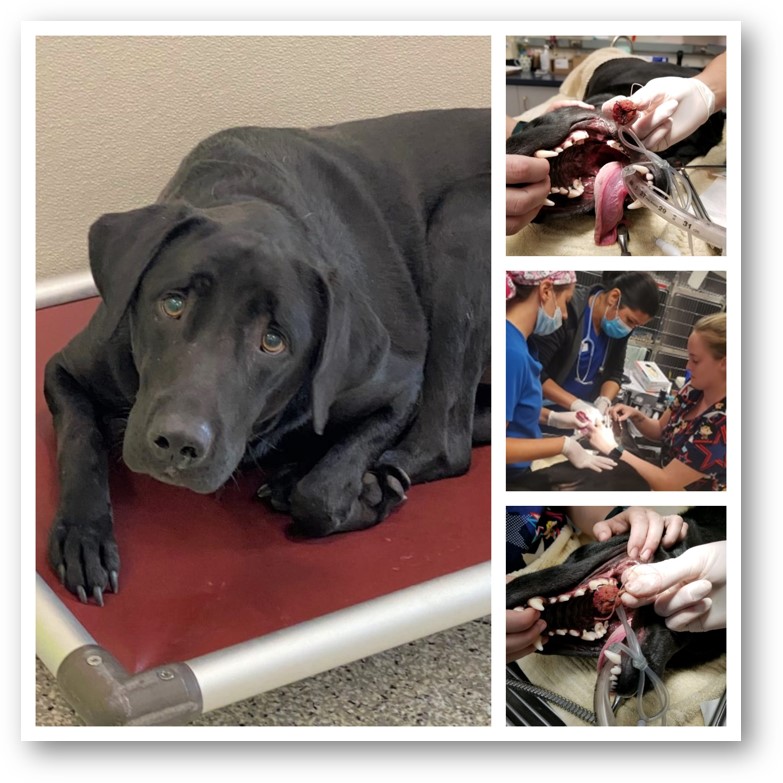
Buck came to our Shelter Medical Center for emergency care since he had swallowed a 3-pronged (treble) fish hook! This was a sticky situation as our shelter didn’t have the perfect piece of veterinary equipment needed to remove the hook from his esophagus, but thanks to the quick thinking of Dr. McGrath, our Director of Shelter Medicine, Dr. Palchek and their veterinary assistant, the three of them were able to sedate Buck and safely remove it using the veterinary tools on hand.
Thankfully, Buck recovered quickly and made his way to the adoption floor.
We’re thrilled to report that he was adopted just 48 hours later! Congrats to Buck and his forever family!!!

Cody’s 2020 wasn’t going so great… earlier this summer, he was attacked by a dog which resulted in his leg being amputated after a lot of damage was inflicted on him. The good news is that now he’s resting comfortably in foster care after being sent for recovery.
His foster family has taken him in with open arms and given him the love he needs. Cody adores lap time and likes to sleep with his head in the palm of a hand. He enjoys being held, purrs a lot, gives licks and tiny nips, and loves having his face, neck, and belly rubbed. Read more…

Meet Sadie. She is a 13-week-old Husky and is as cute as a button. Sadie attempted to jump out of her owner’s truck bed while it was parked and severely injured her leg. Poor pup! She came to our Veterinary Clinic and had orthopedic surgery for a femur fracture. The surgery went well, and Sadie is ready to get back to her puppy duties of playing and, most importantly, being adorable!
Puppies can injure themselves quite easily at a young age because their growth plates aren’t closed and bones are still growing. It’s important to keep an eye on the activities of young dogs to ensure they aren’t running for too long or jumping from too high of surfaces, as the strain can lead to injury. Read more…
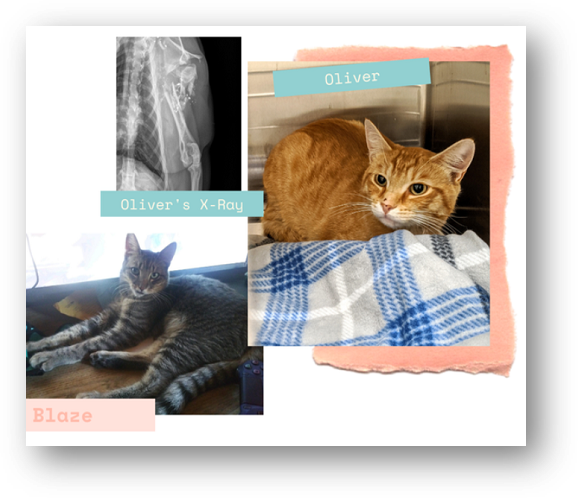
These two sweet boys do not know each other, but they have one traumatic aspect of their life in common. While outside enjoying some fresh air, they were shot. Their owners brought them about a week apart thinking their cat had been entangled in a fight. Our Veterinarian Medical Center performed exams, where the owners were shocked to find out their cats had been shot. Our veterinarians and medical staff quickly went to work to ease their pain. Oliver had his leg amputated, while Blaze had to have teeth removed as well as severe tissue damage to the face.
Thankfully after surgery, both cats went home to rest and recover comfortably.

Simon’s owners became worried when Simon’s eye was frequently closed and had goopy discharge. When he was brought to our Veterinary Medical Center, our veterinarians discovered his eye was severely infected and unfortunately, was past the point of treatability by medication. It was decided the best course of action was for Simon to undergo an enucleation (eye removal).
We understand that it may be quite shocking to learn that a cat will need an eye removed, but it’s the kindest option if it’s been badly damaged, is causing unmanageable pain, is affected by an untreatable condition or contains a tumor. Read more…

Lacey is ready to find her new forever home! This 9-year-old American Pitbull Terrier mix originally came to us as a stray, and we found a mass on her leg when we gave her our veterinary exam. They removed a sizeable soft-tissue sarcoma from directly over her stifle (knee). This area is challenging to operate on because it puts pressure on the incision site every time her knee bends. Our Director of Shelter Medicine, Dr. McGrath, performed a special technique to relieve the tension by making small incisions in the surrounding skin to stretch the skin like a “mesh” to help it cover the area. While it looks a little different from most other procedures, the small incisions are healing well.
It is excellent news for Lacey; we just received word that her margins are clear, and her cancer is gone! We are releasing her for adoption with a waiver that states adopters should monitor her for regrowth of any new tumors. The pathologist report stated the metastatic rate is very low, and she has a good prognosis. Read more…
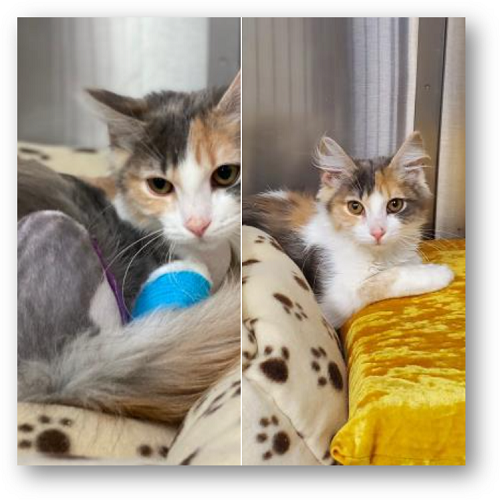
Sophie was brought to our Shelter Medical Center as a stray last week by a Good Samaritan. She was badly injured. Both of her right legs were broken; she had fractures in her tibia, fibula, and humerus. Although we are not sure how she sustained her injuries, our best assumption is that she was hit by a car. In addition to her leg injuries, she had many live mites and eggs in her ears. Poor little fluff ball!
Our Shelter Medical Center was able to administer medication for her ear mites, and tended to her broken legs with surgery. Sophie didn’t quite like her bandages and tried to remove them herself, but our Shelter Medical Center team replaced them in no time. Read more…

Meet Snoop— the dog. He might not be the famous rapper, but he does know how to “Drop It Like Its Hot”, even with three legs!
Snoop came to us with an injury, the Good Samaritan who found him believed he was possibly hit by a car. We immediately gave him a veterinary exam in our Shelter Medical Center and his x-rays revealed that he was actually shot in the back leg! The injuries to his leg were so severe that unfortunately, his hind leg had to be removed.
We sent Snoop to foster for recovery and to learn more about his personality; he adjusted very well to being a tripod! Read more…
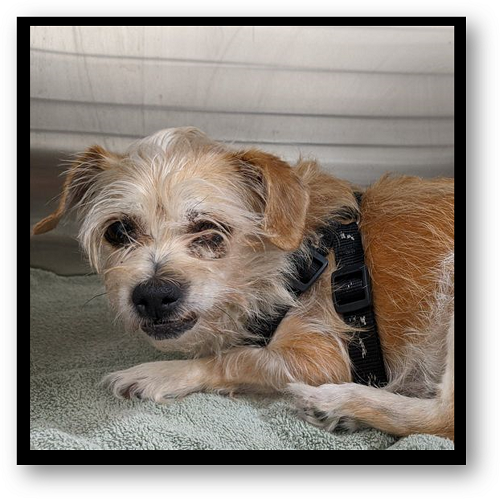
Meet Ginger, she’s an 11-year-old female terrier who was brought into our Veterinary Medical Center by her family because she started to act out of character. After a thorough exam, our doctors diagnosed her as having an infected uterus, known as pyometra, a life-threatening uterine infection that affects older, un-spayed female dogs.
Symptoms include lethargy, depression, anorexia, excessive water intake, excessive urination, and bloody vaginal discharge. Pyometra is a medical emergency that requires immediate veterinarian attention, otherwise, your beloved pet could pass away suddenly. Read more…

Dunkel was brought to our Veterinary Medical Center by his owners after he was found limping around the house. Our vets determined that he had dislocated his hip. Dunkel is 12-years-old and had an age related injury. His owners mentioned that he may have been prepping his bed for a nap when his hip was dislocated. Usually when we see hip dislocations in our clinic, it is the result of a traumatic accident from being hit by a car, but other times pets can find danger chasing after cars, falling into backyard holes, or other age-related causes.
Thankfully, we have two different ways to correct a pet’s dislocated hip. Closed reduction is non-surgical, and is almost always attempted first. Read more…
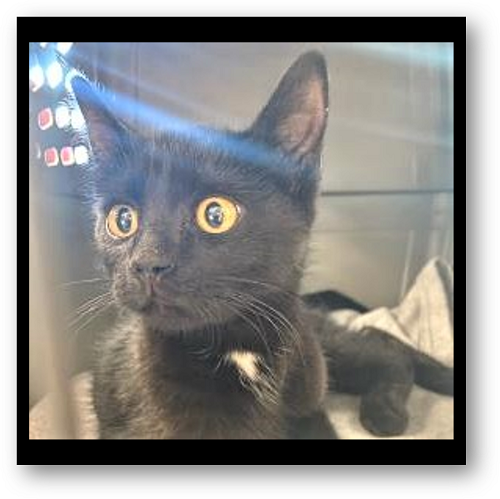
Wyatt is a 5 month old kitty, and he’s got grit! This brave mouser had some serious injuries when he was brought to us through our in-state transfer program. He suffered 4 fractures – 3 in one hind leg, and 1 in the other hind leg. He couldn’t walk or stand, and needed intense surgery. Soon after being brought to our Shelter Medical Center, Wyatt underwent surgery performed by Dr. McGrath.
Only a few days later, Wyatt was up and walking again! Thanks to the can-do cattitude of this brave little kitty, the skilled hands of our doctors and staff, and generous donors, Wyatt is recovering at a rapid pace! Congratulations, little guy! Read more…

In July, Beau and his family were on their way to the mountains. Beau was in the back of a truck, and even though his owners did their best to keep him safe and he had no history of jumping, Beau somehow escaped somewhere near Horseshoe Bend! Beau’s family was devastated. They hung flyers, took to social media, contacted the Boise County Sherriff, and held search parties. They received some positive leads but ultimately everything fell through.
Nearly two weeks later, Beau’s owners received a call from Cascade Raft & Kayak. They had rescued Beau from an Island in the middle of the Payette River about 5 miles north of Horseshoe bend! Read more…

After swallowing a bear-shaped pacifier (photo top right), Zeke was not eating or drinking and was vomiting. Poor pup! His owners had CT scans taken, and then brought him to our Veterinary Medical Center for an enterotomy (surgical opening of the intestine), to remove the pacifier.
The surgery went well, and Zeke is recovering like a champ!

Animal Care and Control officers sprung into action after learning of a cat that was walking around a neighborhood with a trap caught on its leg. The cat gave chase, but thankfully our Humane Officer was able to capture it and bring it into our shelter for care. We sedated the cat before we removed the trap to ensure that the animal didn’t further harm itself or our staff. Thankfully, this cat’s injuries were limited to its paw and we were able to provide medical care and reunite it with its owners.
This cat was trapped off Pine Street/Cloverdale, so parents with young children in the area, please be cautious and keep a watchful eye on your children. Pet owners, we urge that cats be left indoors whenever possible; if you have an outdoor cat, please check on them regularly and the routes they may take around your home. Read more…
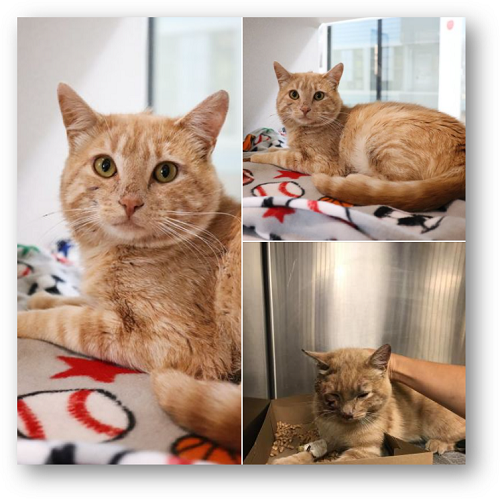
Poor Rick came to our shelter in rough condition after he was hit by a car in mid-June. A good samaritan brought him to West Vet but, because he was a stray, they transferred him to us so we could offer medical treatment and search for potential owners.
When Rick arrived at our shelter, he had SEVERE head trauma and was neurologically inappropriate. He could not see or walk and was practically comatose. It was very touch and go just how much pain he was in and whether or not he would survive. We opted to treat him with aggressive support: Mannitol to reduce brain swelling and IV fluids. Day by day, we saw more improvements in his neurological status and – finally!- on day 4 or 5 he started walking and eating on his own. Read more…
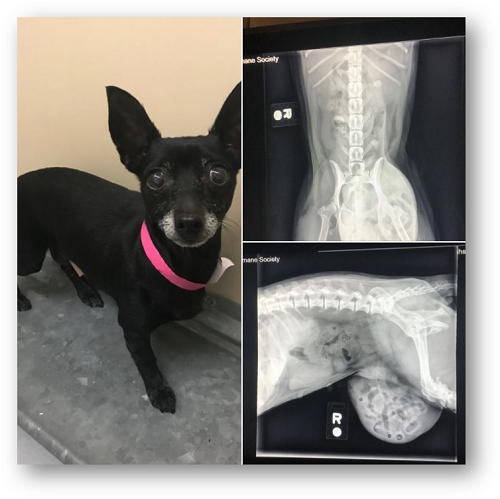
Can you imagine having a hernia that weighs half as much as you do?? Unfortunately, little Kirby didn’t have to imagine it — it was her reality!
Kirby, a 13-year-old Chihuahua mix, came to our shelter as a stray with a HUGE inguinal hernia. An inguinal hernia occurs when tissue, such as part of the intestine, protrudes through a weak spot in the abdominal muscle. Most of Kirby’s small intestine and all of her uterus was in the hernia. If you look closely at the x-ray photos, you can see that the sac under her belly is filled with intestine. This hernia was the size of a small cantaloupe and it looked even bigger on such a small dog! Kirby had surgery earlier this week to repair her hernia. Read more…

Abby, a 6½-year-old Great Dane mix, had a Gastropexy last week. Gastropexy is a surgical procedure that tacks the stomach to the abdominal wall. These surgeries are performed to reduce the chances of an animal developing Gastric Dilatation and Volvulus (GDV) in the future. This is also known as torsion or bloat. GDV is a life-threatening surgical emergency where the stomach fills up with gas and then twists, which can cut off blood supply to their vital organs. This is a surgery we commonly perform on Great Danes and other high-risk breeds who enter our shelter in order to help try and prevent a catastrophe in the future. Read more…

Today was a big day for a big dog! Alden is 120 pounds of lovable, cuddly, mastiff-y goodness. Unfortunately, Alden came to our shelter suffering from two anterior cruciate ligament ruptures (both knees!).
Our veterinarians see these injuries all the time because they are the most common orthopedic ailment of dogs. We perform a specialized surgery called Tibial Plateau Leveling Osteotomy (TPLO) in dogs with this injury to restore them to pain free mobility. In a giant breed dog like Alden, a double TPLO could easily cost over $10,000 at a private veterinary hospital.
Because of the extraordinary expense it would take for Idaho Humane Society to send such patients to an outside hospital, we have to perform these procedures within our Veterinary Medical Center. We typically perform at least one TPLO on a shelter dog each week; in fact, Alden is the third shelter dog that received a double TPLO surgery just this month! If we didn’t have this capability, dogs like Alden would go to homes where a new owner would immediately be subjected to thousands of dollars in expense, or the pet would suffer from debilitating arthritis for the rest of its life. It can be hard to find a home to adopt a giant breed dog, let alone a new owner that is willing and able to spend thousands of dollars on a newly adopted pet! Read more…

Last week, we transferred a puppy from Burley to our shelter so we could provide life-saving medical care. The puppy, a 10-week-old Chihuahua mix, was extremely dehydrated and emaciated thanks to a raging case of Parvo. She was only 3.5 pounds and had bloody diarrhea and vomit. Her initial prognosis was very poor, but we immediately placed an IV Catheter and prescribed her antibiotics.
We also had to place a feeding tube to help her receive nutrition and give her a fighting chance. She has been hospitalized in our care for about a week and our medical staff regularly checks on her throughout the day. When an animal has parvo, we have to play the waiting game to see if the animal’s immune system is strong enough to fight the virus. Even with medical assistance, parvo can be fatal. Read more…

Smithers came into our shelter as an owner surrender; he became depressed and very stressed. He developed an upper respiratory infection and stopped eating. Fortunately, his cold was resolved in two weeks, but his appetite did not come back. This can sometimes be the beginning of a larger medical issue as cats can become food averse if they develop a condition that causes them to lose their appetite. They recover from the original problem, but the appetite does not come back and in fact the sight/smell of food upsets them.
Our Shelter Medical Center placed a feeding tube into Smithers in order to feed him, eventually sending him to foster. Our staff and foster family did not give up on Smithers. We’re happy to report that after more than 3 months of tube feeding, he finally got his appetite back!
He’s been eating great while in foster care and is back to his normal self. He’s happy, healthy, and looks like a whole new cat. In cases like these, it took some persistence and a lot of hope to get him back to full health. Read more…

Meet Darby – a 10-month-old Catahoula mix who is as friendly as she is cute. This sweet girl was a patient at our public veterinary clinic and we had seen her a number of times for waxing and waning gastrointestinal (GI) issues. Over the past couple of weeks, Darby had been acting strangely. She was vomiting, lethargic, losing weight, and disinterested in food.
She received an abdominal ultrasound by a traveling radiologist who came to our medical center and they diagnosed her with an intussusception. This is a condition where the one section of the bowel telescopes into another intestinal section which then causes an obstruction or blockage. Darby’s owners ultimately decided to surrender her due to personal and financial reasons surrounding the surgery. She was immediately transferred to our Dorman facility so our shelter veterinarians and WSU veterinary students could perform an emergency surgery to resect her obstructed bowel. Read more…
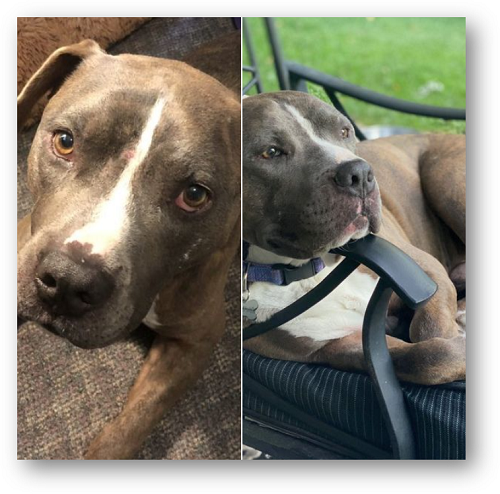
Baine was transferred to IHS earlier this week after he was found on someone’s property, wounded and unable to walk. It was reported that he may have been hit by a car but All Valley veterinarians found a small bullet wound between the eyes as well. The bullet went in through the skull between the eyes and fragmented.
Thankfully, the bullet missed Baine’s brain or else this would have been a fatal wound.
It was unclear if Baine sustained neurological damage as he was unwilling to walk the first two days in our care. However, he was finally able to walk on his own Wednesday morning so his prognosis is looking good. If you look at the x-rays, you can see the fragments are spread throughout his neck. Baine does have some swelling in his neck because of this but surgery is not recommended. The fragments are small enough and hard to find that there is a good chance we would cause more damage if we were to try looking and removing them. Read more…

Ice was surrendered to our shelter in late January due to health and behavior issues at 5 months old. During an evaluation with our shelter trainer, we noticed that Ice was leaking urine and she seemed completely unaware of it. Ice was treated in the past for UTIs and possible incontinence but with no success, so our shelter veterinary staff took x-rays and determined that Ice had an Ectopic Ureter. This means Ice had a ureter that wasn’t connected to the bladder so the urine would leak and drain elsewhere (usually through the urethra). Ice had no bladder control because of this and would unknowingly urinate throughout the day. Read more…

Duckie, a 9-week-old Boxer/Great Pyrenees mix puppy, was surrendered to our shelter almost a month ago because his previous owners were concerned about his health. Duckie acted like a normal puppy in every way except for one: his previous owners had never seen him have a bowel movement. On his medical exam, we discovered Duckie was born without an anus. Yes, you read that right.
Duckie was born with a genetic defect called an ‘imperforate anus’. This means that he has a fully functioning digestive system except for the lack of an anal opening which never developed during gestation. Read more…
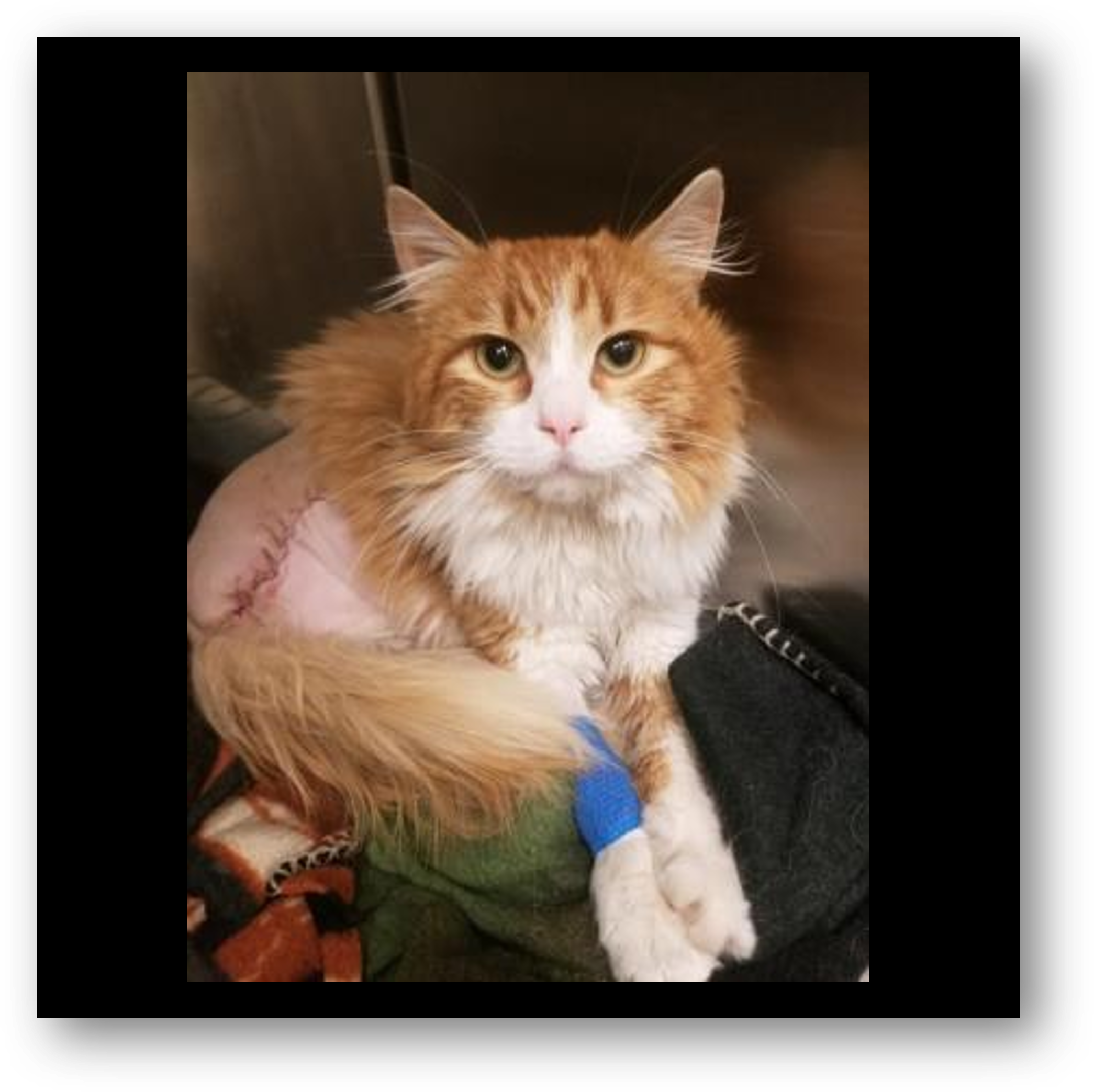

Max was discovered wandering the streets, severely neglected, and hungry. His once white coat was soiled with mud and terribly matted. He has open sores on his face and body, which were infected and infested with maggots. Many of his teeth were missing due to untreated dental disease, and most of those that remained were abcessed. After running for days, perhaps weeks, his paws were blistered and torn. Max was in pain, starving, and just trying desperately to survive.
GRAPHIC PHOTO WARNING: If you’d like to see his before/after photos, visit: https://bit.ly/MaxIHS
A Good Samaritan brought Max to the Idaho Humane Society, where our veterinarians bathed him, treated the sores on his skin, bandaged his paws Read more…